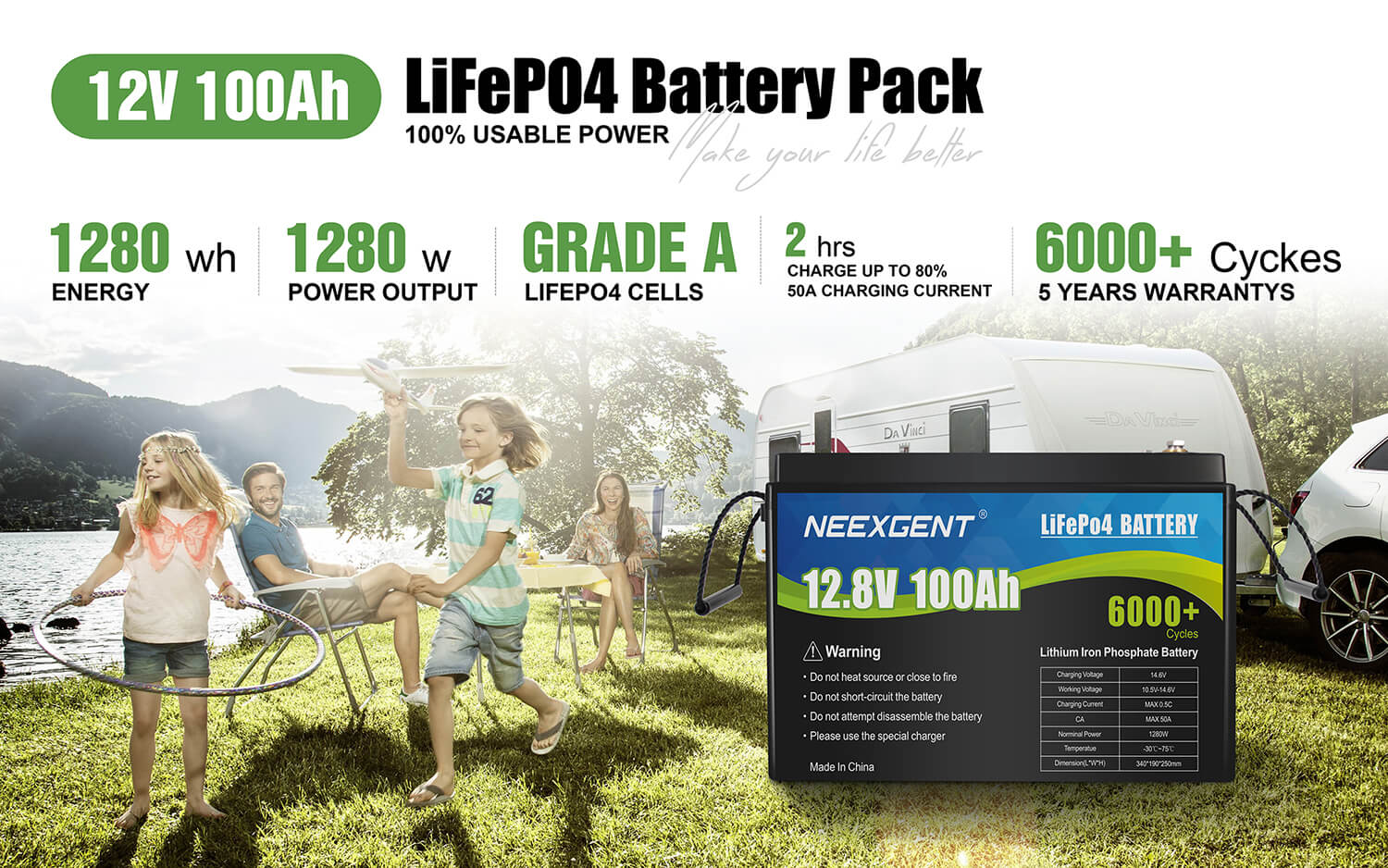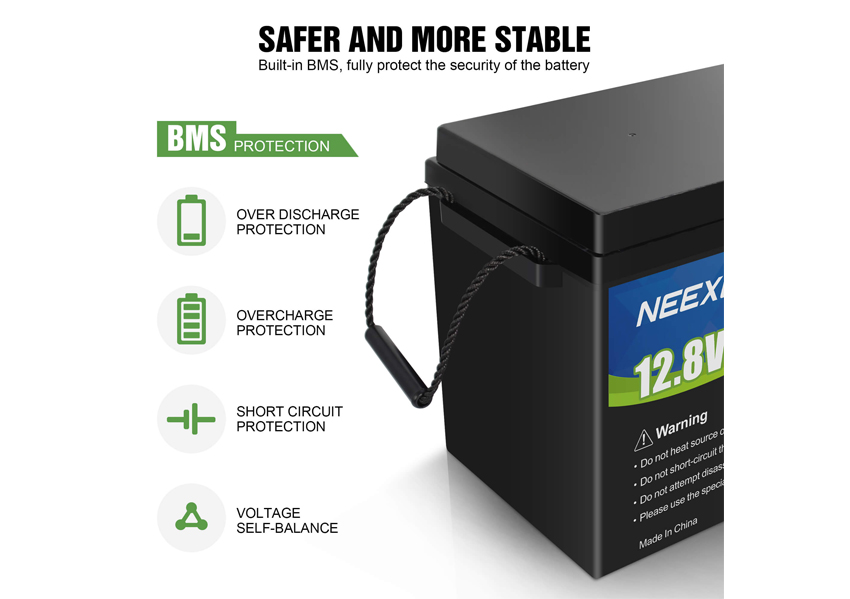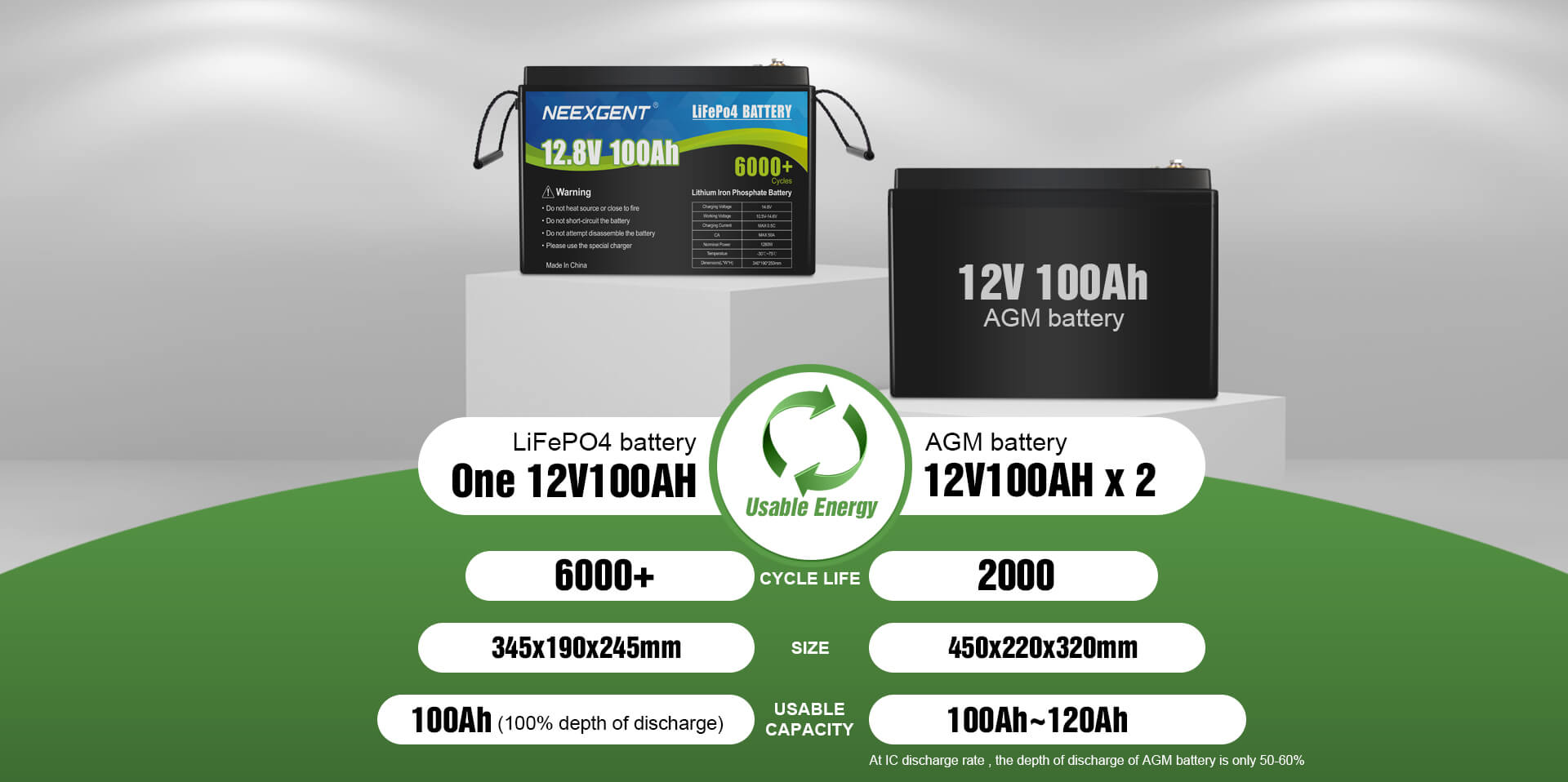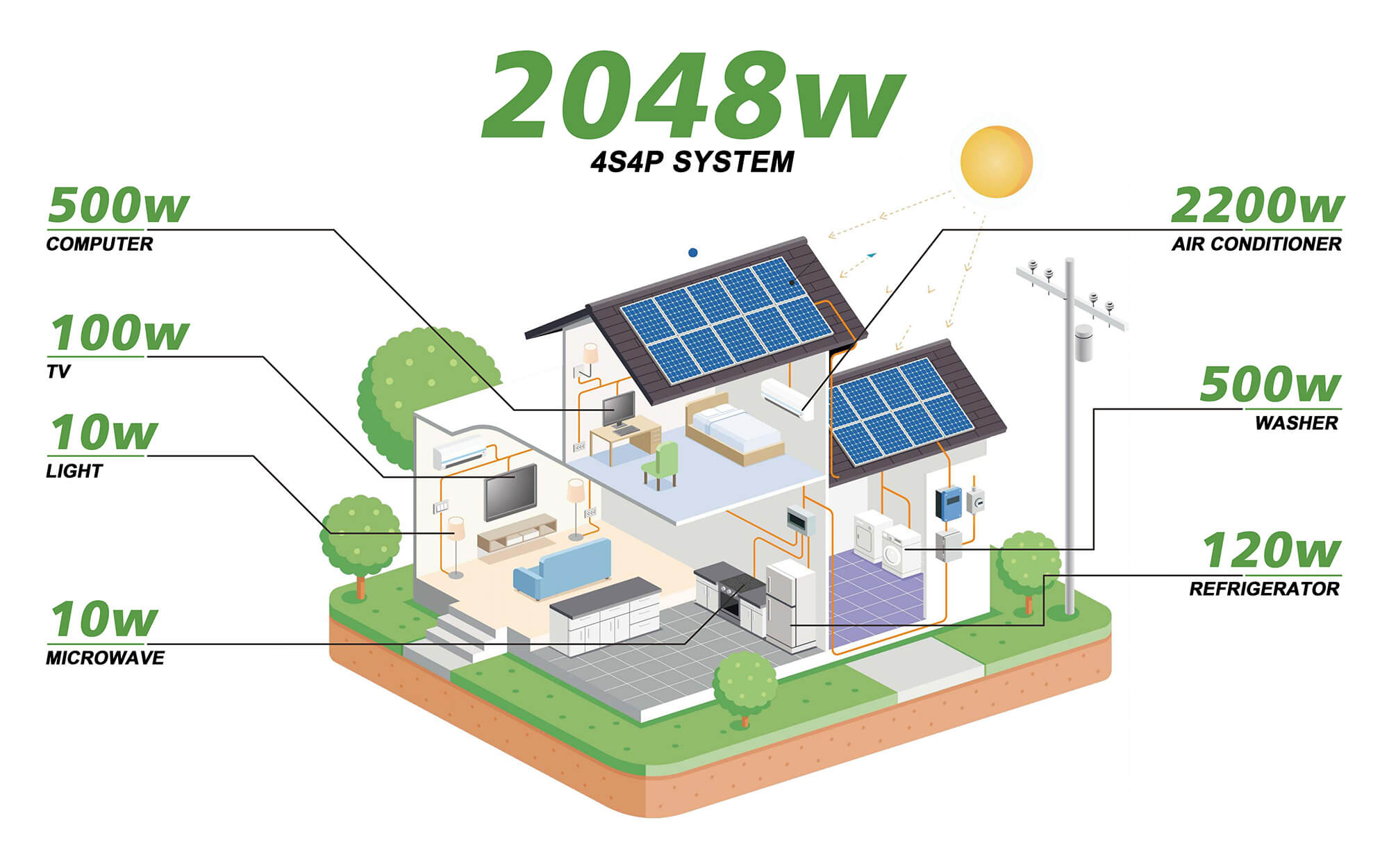
1. Capacity and Voltage:
- Determine the power requirements of your application, including the average power consumption and the duration of usage. This will help you estimate the capacity (measured in ampere-hours or watt-hours) needed for your LiFePO4 battery pack.
- Consider the desired runtime or backup power duration for your application. Choose a battery pack with sufficient capacity to meet your runtime requirements without over-discharging the battery, as over-discharging can reduce the battery's lifespan.
- Take into account any potential future power requirements or expansion plans for your application, and choose a battery pack with enough capacity to accommodate those needs.
- Ensure that the voltage of the LiFePO4 battery pack is compatible with the devices or systems you intend to power. Different applications may require different voltage levels, so it's crucial to choose a battery pack with the correct voltage to match your system's requirements.
- Consider the nominal voltage of the battery pack, which is the average voltage during the battery's discharge cycle. Also, take into account the voltage range, which includes the highest and lowest voltage levels that the battery pack can operate within. Make sure that the battery pack's nominal voltage and voltage range are suitable for your application.

2. Cycle Life and Warranty:
- Cycle life refers to the number of charge and discharge cycles a battery can go through before its capacity drops to a certain percentage of its original capacity. Consider the cycle life of the LiFePO4 battery pack and choose one that meets the needs of your application.
- Higher cycle life batteries are generally more durable and can provide longer-lasting performance. Depending on your specific requirements, consider a battery pack with a cycle life that matches the expected usage pattern of your application to ensure optimal performance over time.
- Factors such as charge and discharge rates, depth of discharge, and operating temperature can also affect the cycle life of the battery pack. Consider these factors in combination with the cycle life specifications to choose a LiFePO4 battery pack that will best suit your application's needs.
- Check the warranty offered by the manufacturer when choosing a LiFePO4 battery pack. A longer warranty period generally indicates higher confidence in the battery pack's quality, performance, and durability.
- Review the terms and conditions of the warranty, including coverage, limitations, and any additional requirements. Consider the reputation and reliability of the manufacturer in honoring their warranty commitments.
- A comprehensive warranty can provide peace of mind and protection against potential defects or issues with the battery pack. It can also indicate that the manufacturer stands behind their product and is committed to providing reliable and high-quality battery packs.

3. Safety Features and Certification:
- Verify the safety features of the LiFePO4 battery pack to ensure safe operation. Look for battery packs that include essential safety features such as overcharge protection, over-discharge protection, short-circuit protection, and temperature protection.
- Overcharge protection prevents the battery from being charged beyond its safe voltage limits, which can reduce the risk of overcharging and potential damage to the battery.
- Over-discharge protection prevents the battery from being discharged below its safe voltage limits, which can help prevent over-discharging and extend the battery's lifespan.
- Short-circuit protection prevents excessive current flow in case of a short circuit, which can help prevent damage to the battery and the connected devices or systems.
- Temperature protection monitors the battery's temperature and prevents it from operating outside of safe temperature ranges, which can help prevent overheating and potential thermal runaway.
- Verify that the LiFePO4 battery pack you choose has these essential safety features to ensure safe and reliable operation in your application.

4. Form Factor and Integration:
- Consider the form factor and size of the LiFePO4 battery pack based on your specific application's requirements. The physical dimensions, weight, and installation requirements of the battery pack should be suitable for your application.
- Verify that the battery pack's form factor and size are compatible with the available space in your application, whether it is a device, system, or equipment.
- Check if the battery pack comes with suitable connectors or terminals for easy integration into your system. The type and size of connectors or terminals should match your system's requirements or be easily adaptable with minimal modifications.
- Consider the ease of integration of the battery pack into your system. Some battery packs may require additional accessories or modifications to properly integrate into your system, such as mounting brackets, wiring harnesses, or battery management systems (BMS).
- Take into account any specific requirements or constraints of your application, such as weight limitations, space limitations, or environmental conditions, and choose a LiFePO4 battery pack that meets these requirements.

5. Price and Budget:
- Consider the cost and budget for the LiFePO4 battery pack as it may vary depending on factors such as brand, capacity, features, and quality.
- Set a budget for your battery pack purchase and compare different options within that budget.
- Keep in mind that cheaper battery packs may not always offer the same quality, performance, and reliability as higher-priced options.
- Compare the features and specifications of different battery packs within your budget to ensure they meet your requirements and provide value for money.
- Look for battery packs from reputable brands with a track record of producing reliable and high-quality products, even if they may be slightly more expensive.
- Consider the total cost of ownership, including factors such as cycle life, warranty, and maintenance requirements, when evaluating the price of the battery pack.
- Be cautious of overly cheap battery packs that may compromise safety, performance, or durability, as investing in a higher-quality battery pack upfront can save costs in the long run by avoiding potential issues and replacements.

6. Reviews and Feedback:
- Consider the cost and budget for the LiFePO4 battery pack as it may vary depending on factors such as brand, capacity, features, and quality.
- Set a budget for your battery pack purchase and compare different options within that budget.
- Keep in mind that cheaper battery packs may not always offer the same quality, performance, and reliability as higher-priced options.
- Compare the features and specifications of different battery packs within your budget to ensure they meet your requirements and provide value for money.
- Look for battery packs from reputable brands with a track record of producing reliable and high-quality products, even if they may be slightly more expensive.
- Consider the total cost of ownership, including factors such as cycle life, warranty, and maintenance requirements, when evaluating the price of the battery pack.
- Be cautious of overly cheap battery packs that may compromise safety, performance, or durability, as investing in a higher-quality battery pack upfront can save costs in the long run by avoiding potential issues and replacements.

7. Applicaion-specific Requirements:
- Consider any specific requirements or considerations of your application when choosing a LiFePO4 battery pack. These may include the operating temperature range, discharge rate, charging method, and any other unique needs of your application.
- Verify that the battery pack is designed to operate within the temperature range of your application. Extreme temperatures can affect the performance and lifespan of the battery, so it's crucial to choose a battery pack that is suitable for the operating conditions of your application.
- Check the discharge rate of the battery pack, which refers to how quickly the battery can release its stored energy. Ensure that the battery pack's discharge rate matches the power requirements of your application to avoid overloading the battery and compromising its performance.
- Consider the charging method of the battery pack. LiFePO4 battery packs can be charged using different methods, such as constant voltage or constant current charging. Choose a battery pack that is compatible with the charging method available in your application to ensure safe and efficient charging.
- Take into account any other unique needs of your application, such as size, weight, mounting options, and integration requirements. Some applications may have specific requirements that need to be considered when choosing a battery pack, such as space limitations, weight restrictions, or mounting options.
- Verify that the battery pack meets any applicable industry standards or certifications for your specific application, such as marine, automotive, or industrial standards, if required.












